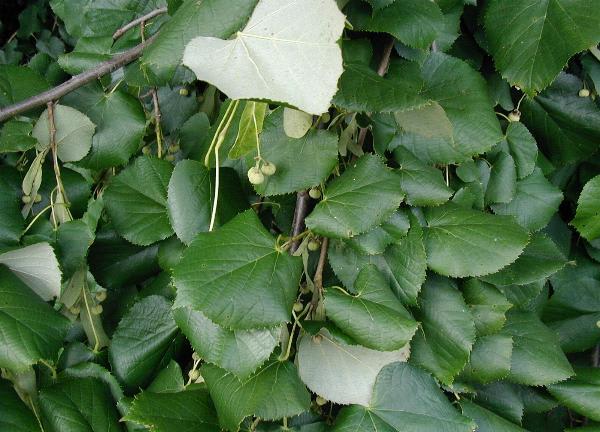Silver linden, Silver lime, White linden, Woolly linden
Tilia tomentosa

🌿 Morphology
🌞 Growing conditions
🌍 Origin and family
🌾 Uses
Warning: Despite the care taken in writing this sheet, it is essential to cross-reference sources before using or consuming any plant. When in doubt, consult a qualified professional
Permaculture uses
Silver linden is primarily used as a shade tree in permaculture systems. Its fragrant flowers attract pollinators, benefiting surrounding plants. The flowers can also be used to make a calming tea. The tree's large leaves contribute significantly to mulch production when they fall. While not a primary food source, the inner bark can be edible in a survival situation. It is also sometimes used in apiculture as a bee forage.
Permapeople description
A medium-sized deciduous tree with silvery-white undersides to its leaves, giving it a shimmering appearance in the wind. Fragrant flowers attract bees and other pollinators. More drought tolerant than other limes.
Botanical description
Tilia tomentosa is a deciduous tree growing to 65-100 feet tall, with a trunk diameter of up to 6.5 feet. The crown is conic when young, becoming rounded with age. The leaves are alternately arranged, ovate to rounded, 2.4-5.1 inches long and broad, thinly felted with white hairs below, and green above. The flowers are produced in drooping cymes of 3-10, yellowish-white, and fragrant; they are hermaphroditic and insect-pollinated. The fruit is a dry nut-like drupe 0.3 inches long, densely tomentose.
Companion planting
Silver linden is generally considered a beneficial companion plant due to its ability to provide shade and attract pollinators. Its deep roots can help improve soil structure. However, its dense canopy can cast heavy shade, which may inhibit the growth of shade-intolerant plants.
Propagation methods
Silver linden can be propagated by seed, though germination can be slow and erratic. Cuttings are also possible, but can be difficult to root. Grafting onto Tilia cordata rootstock is a more reliable method of propagation.
History and traditions
Silver linden has been cultivated in Europe for centuries, often planted as an ornamental tree in parks and gardens. In some cultures, the tree is associated with peace and tranquility. The wood is used for carving and woodworking. The flowers have a long history of use in traditional medicine as a calming and sleep-inducing remedy.
Usage calendar
Flowering occurs in late spring to early summer (June-July). Seed collection is typically in the fall (September-October). Planting is best done in the dormant season (late fall or early spring). Pruning should be done in late winter.
